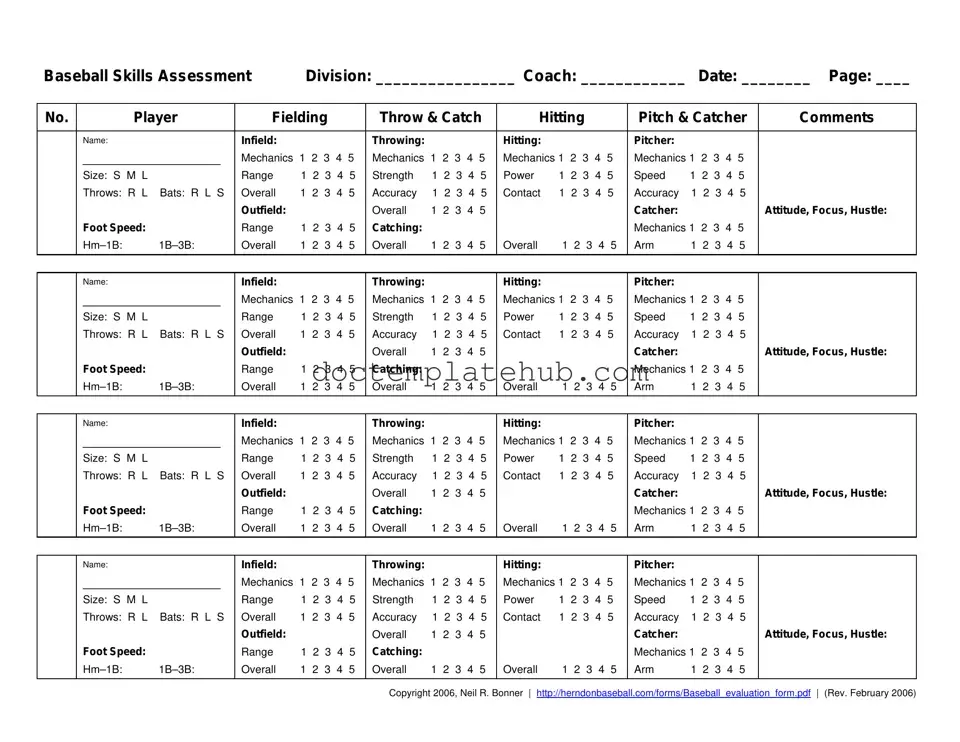What is the purpose of the Baseball Assessment form?
The Baseball Assessment form is designed to evaluate players' skills during tryouts for baseball teams. Coaches use this form to score players in various categories, including fielding, throwing, hitting, and pitching. The scores help determine which players will be selected for teams, ensuring a fair and structured evaluation process.
How are players scored on the assessment form?
Players are scored on a five-point scale for each skill category. A score of five indicates exceptional ability, while a score of one signifies very poor performance. Scores of two, three, or four reflect varying levels of skill in between. This scoring system allows coaches to quantify players' abilities and compare them fairly against their peers.
What categories are included in the assessment?
The assessment covers several key categories: infield, outfield, throwing, catching, hitting mechanics, power, contact, and pitching. Each category is broken down further into specific skills, allowing coaches to provide detailed feedback on a player's performance. Additionally, attitudes, focus, and hustle are also considered, as they contribute to a player's overall effectiveness on the field.
How long do tryouts typically last?
Tryouts usually last between two to two and a half hours. This timeframe allows for a comprehensive evaluation of each player's skills through various drills, including base running, infield and outfield skills, and hitting practice. The structured schedule ensures that all players receive ample opportunity to demonstrate their abilities.
What should players expect during the tryout process?
Players should expect a series of drills designed to assess their skills. They will participate in warm-ups, base running, fielding, and hitting exercises. Coaches will provide instructions and feedback throughout the process. Players are also encouraged to demonstrate good sportsmanship and hustle, as these traits are important for team dynamics.
How is the final team selection made?
After scoring players based on their assessment results, the first eight players are typically selected based on their scores. The All-Star manager then has the discretion to choose the remaining players, considering other factors such as team needs and player attitudes. This approach allows for a combination of objective scoring and subjective evaluation, leading to a well-rounded team selection.
